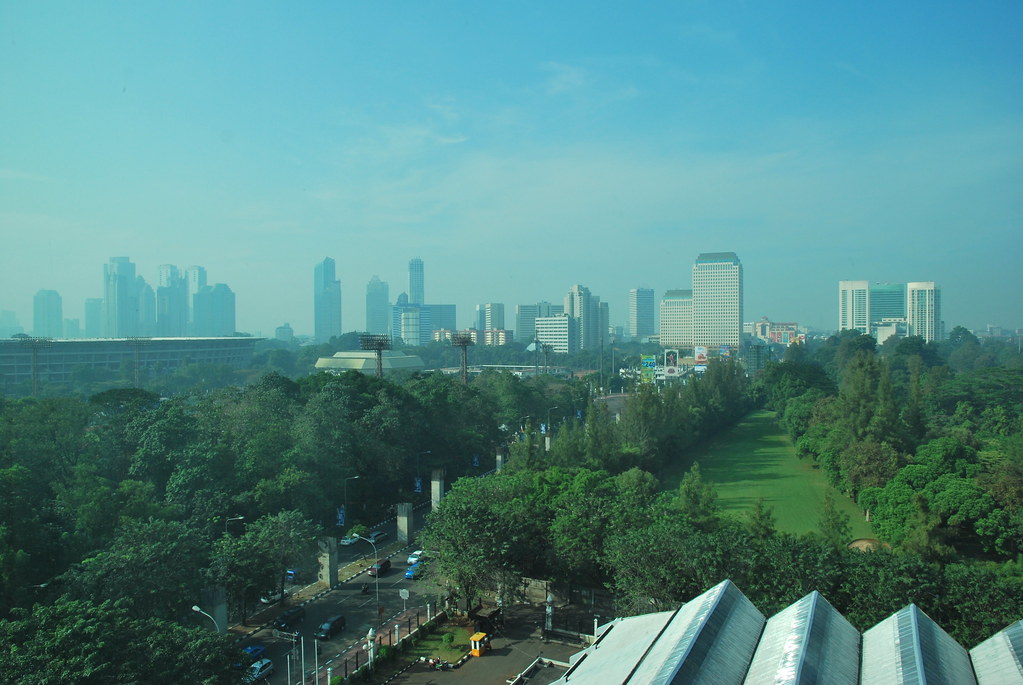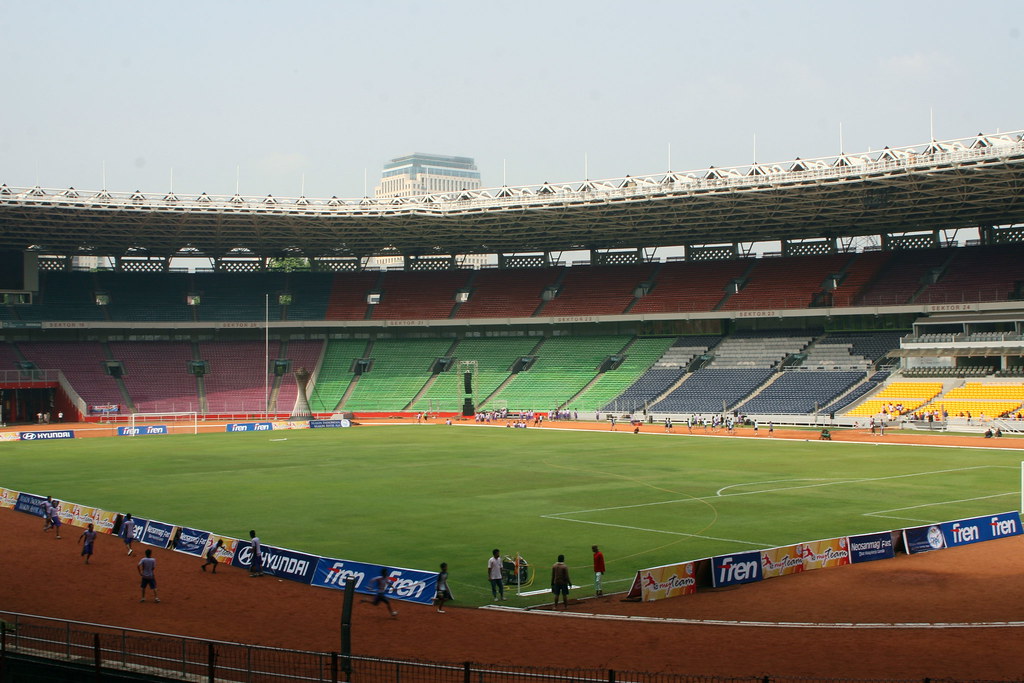
In my previous post was discussed on the State projects pasa era of President Sukarno's old order such as the construction of the National Monument and Istiqlal mosque. A milestone achievement by him in about '50 until '60. Not without reason, purpose and objectives of the president at that time wanted to show the world that Indonesia could, that Indonesia is magnificent. We both knew before the world knew that the newly independent Indonesia from the occupiers, and could have the world assume that the state of the newly independent state is certainly still in a messy (it was true at the time), the area has not so neatly, region broken out battered, left, and so on.
President Sukarno at the time wanted to change the paradigm of the world about the image of Indonesia. He seems to want to return the glory and splendor mereinkarnasi Indonesia as time immemorial. We remember the forerunner of Indonesia, there Sriwijaya as the first maritime nation with Borobudur temple as a world heritage magnificent: o and Majapahit as a unifying archipelago :).
Mega projects dibangunpun time together, not said in evasion, I assumed that more than half the state budget by then sucked out to finance the project "glorify megahan" Sukarno-style: D. And this could be the beginning of the central government to build Jakarta more than other areas. Want to think about where? Sumatra, Kalimantan, Sulawesi or Papua, the area at the time Java was just too much left. Moreover, my home town in Riau, my jungle still possible: D. And more ironically, the development was made during most of the Indonesian population classified as poor: (.

This is one of Sukarno's prestige in welcoming the opportunity to offer a host Indonesia olahrga great party event in Asia, the Asian Games of the IV. Once approved, he immediately ordered his subordinates to immediately design a modern sports center complex and comprehensive as well as public parks and green open space. How the story to serve as the Senayan construction site? and this development expense of 4 villages with over 60,000 residents to flee from home: o.
And at that moment raging Bung Karno complex is vast. Keluasannya ultimately it must be divided for the construction of government offices and private.
History

On July 21, 1962, Stadium capacity of 100 thousand spectators perfectly constructed. In early February 1960, exactly on February 8, the first president Ir Soekarno (Bung Karno) plunged the stake as a declaration Stadium complex construction of the Asian Games IV, witnessed by deputy prime minister of the Soviet Union, Anastas Mikoyan.
Its construction was funded with soft loans from the Soviet Union for U.S. $ 12.5 million of certainty gained on December 23, 1958. There's something special about this Stadium. Characteristic of this building is the 'roof of the Intersection bracelets' oval. The long axis of the building (north-south) along the 354 meters, the short axis (east-west) along the 325 meters. The stadium is surrounded by an outer ring road (athletic tracks) along the 920 meters. There are parts of a football pitch-sized 105 x 70 meters, the following elliptical paths, with the long axis of 176.1 meters and 124.2 meters short axis.
With a capacity of about 100,000 people, the stadium is built in the mid-1958 and the completion of its first phase in the third quarter of 1962 is one of the largest in the world. Toward the Asian Cup 2007, made renovations to the stadium that reduce the stadium capacity to 88,083 spectators.
In order to de-Soekarnoisasi, the New Order era, the name was changed to Stadium Utama Senayan Stadium. After bergulirnya wave of reform in 1998, this stadium's name returned to the original name through Presidential Decree No. 7 / 2001.

This stadium manager is Bung Karno Foundation, which until now was believed to be a complex operator Bung Karno Stadium.
In the era of the Foundation this Senayan Sports Arena, there were many irregularities that Bung Karno Geloran area originally breadth 279.1 hectares have been reduced to 136.84 acres (49%) only.
Of the amount was 51%, about 67.52 hectares or 24.2% of the area originally used for a variety of government buildings such as the building of MPR / DPR, Office of the Ministry of Forestry, Office of the Ministry of National Education, Building TVRI, Graha Pemuda, Gelora Keluragan Office, SMU Negeri 24, health center, and restaurants.
The rest, a 26.7% or 74.4 hectares leased or sold to a variety of buildings such as the Hotel Hilton, Ratu Plaza commercial complex, Hotel Mulia, Hotel Atlet Century Park (formerly Wisma Atlet Senayan), Taman Ria Remaja Senayan, Wisma Fairbanks , Plaza Senayan and various other commercial buildings.
Although GBK then "siege" of the building that is not to exercise its function as a green open space is maintained. Through cooperation with Pemda DKI Jakarta organized the Master Plan Gelora Senayan area that sets the maximum coefficient of Building Basic 20 percent....


This means that 80 percent of the area preserved remains open. Open space that would become 84 percent after the increase and the arrangement of the Park East parking parking, construction of gates at the South Plaza (facing Jalan Jenderal Sudirman), and the replacement of the fence in mid-2004 environment.
No comments:
Post a Comment
Note: Only a member of this blog may post a comment.